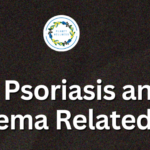What Can Iridology Reveal?
As experienced Iridologists, we are frequently asked, “What can Iridology reveal?” Iridology is a fascinating science that explores the potential of our eyes to provide insights into our overall health and well-being. In this article, we’ll look at Iridology through the eyes of an Iridologist, explaining how this holistic practice works and what it could reveal about your health.
Understanding Iridology
Iridology, sometimes known as “eye diagnosis,” is a holistic healing modality that dates back to the 19th century. Its inception is attributed to the Hungarian physician, Ignaz von Peczely, who saw unique changes in an owl’s iris after it had recovered from a leg wound. As a result of this finding, he hypothesised that the iris could reveal information about a person’s health.
Iridology’s central tenet is that the iris—the coloured portion of the eye—is a microcosm of the body. According to Iridologists, many iris components and characteristics are correlated with various bodily functions, systems, and facets of our health. Iridologists use a detailed and close-up examination of the iris to look for signs, patterns, colours, and markings that can provide insights into a person’s physical, emotional, and even spiritual well-being.
In the video, Ronald explains what Iridology is and how he got involved in it.
How Does Iridology Work?
Iridology entails a thorough and methodical analysis of the iris. Iridologists carefully examine the iris using special equipment like magnifying glasses, cameras with macro lenses, or slit-lamp microscopes. This examination takes into account a number of important factors, including:
Iris Colour: The overall colour of the iris can disclose a person’s genetic predispositions and potential weaknesses in the body. For example, people with blue eyes may develop conditions such as arthritis, rheumatics, and/or osteoporosis as they age and their body’s lymph system is often overloaded.
Pigment Pattern: The iris patterns are believed to be linked to specific diseases. Typically, the markings and patterns of the iris are contrasted with an iris chart that associates particular iris zones with other parts of the body. In addition, your iris patterns are a more accurate form of identification than your fingerprints.
Iris Topography: In Iridology, the iris’s structural features like crypts, furrows, and collarettes are studied to detect potential health issues. Crypts reveal inflammation or degeneration based on their appearance and depth. Collarettes reflect a person’s nervous constitution, while furrows may suggest spastic conditions in reflex organs or disrupted autonomic nervous system regulation and altered circulation in nearby tissues.
Markings and Lesions: Iridologists use iris markings and conditions to identify past, present, and potential future health issues. Neuro-optic reflexes in the iris can manifest as distinctive markings or discolorations, indicating health problems. Even Peczely checked for marks, lesions, and irregularities in specific iris quadrants linked to particular organs for anomalies and clues about one’s health.
Pupil Size and Reactivity: The autonomic nervous system influences pupil size, reflecting dominance in either the sympathetic or parasympathetic system, and impacting metabolic function. Pupil border variations provide insight into spinal and structural issues, with potential reflex effects on organs, muscles, and metabolism.
Watch our video to learn about What Is Iridology And How Does It Work.
What Can Iridology Reveal?
Iridology can provide a wealth of knowledge regarding a person’s health and well-being:
Genetic Predispositions: The iris relates genetically to the effectiveness and weaknesses of the physiological systems through reflex response. Iridology is one of the most effective methods for determining which parts of the body are genetically strong and which are deficient.
It is believed that at least four generations’ worth of health issues can be seen in our genetic markers. Iridology can provide us with a clear image of our health potential as well as a plan for supporting optimal health based on our genetics. To optimize your quality of life, support your body’s weak areas before stressors have a chance to take hold by drawing on genetic traits shown by your iris qualities.
Current Health Conditions: An Iridologist will examine a patient’s eye and compare the findings to a chart to identify any health issues that have caused changes in the iris. Iridology, for instance, can detect hypertension if there is a ring around the iris, which can indicate high blood pressure as demonstrated by a slow metabolism. Inflammation, weaknesses, and strengths, as well as the stage at which they are manifesting, are all revealed by this science and practice. Such information is used to create nutrition and homeopathic treatments that target the root causes of disease.
Past Health Issues: Even if a health issue has been resolved in the past, with Iridology, the iris might still show traces of those previous health problems. This information can be quite useful in determining someone’s overall medical history.
Organ Function: Iridology is the study of systematically mapped regions of the iris and the corresponding assigned organ systems. The idea is that by simply looking at the iris, one may determine how an organ is functioning. Iridology is able to identify organ dysfunction brought on by toxins in the environment, poor nutrition, and fatigue. Brown stains in the liver part of the iris, for example, may aid an Iridologist in detecting liver disease and making recommendations for dietary changes or digestive support. If detected early enough, a treatment program can often prevent the condition from worsening.
Emotional and Psychological Factors: The iris can reveal information about our emotional and psychological states. Risks to psychological health can also be revealed by Iridology. An Iridology reading can reveal stress, including how much and where a person tends to hold stress. Iridologists can detect stress by looking at rings near the iris’ edge that resemble the rings inside a tree trunk. The more rings there are, the more stressed the body is. The deeper the rings are set, the longer the body has been stressed.
Watch our video to learn more about what your iris can reveal about your health.
Conclusion
As Iridologists, we believe that Iridology offers a valuable approach to understanding one’s health from a holistic perspective. While it may not be widely accepted within mainstream medicine, it has garnered a dedicated following among those who appreciate its holistic and preventative approach.
Ultimately, whether you choose to explore Iridology or not, it underscores the interconnectedness of our bodies and the potential for hidden clues to our health in the most unexpected places—our eyes. Iridology continues to inspire curiosity and exploration among individuals seeking alternative ways to enhance their well-being.
To learn more about Iridology, check out our other related blogs:
What Can You Tell From Iridology?
What Conditions Can Iridology Detect?
Can Iridology Detect Dementia?
Can Iridology Detect Depression?
NEXT STEPS
Book in a complimentary 15 minutes Zoom call with us (valued at £99) to enable us to clarify questions you may have on a specific health concern.




